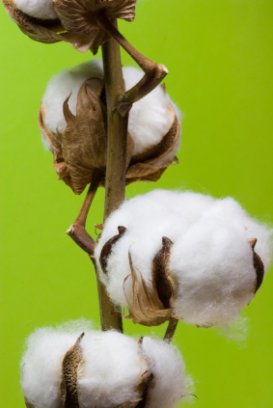
First update on 2025 Sustainable Cotton Challenge
Textile Exchange reports that organic cotton, in general, continues to have the lowest environmental impacts.

28th June 2017
Knitting Industry
|
Lamesa, TX
“The Quick Guide to Organic Cotton, highlights the benefit of organic production as a pathway to restorative, resilient and regenerative landscapes and communities,” said La Rhea Pepper, the Managing Director of Textile Exchange. “Cotton production has evolved over the last 15 years, and greater awareness of the health, economic and environmental benefits of organic farming practices by farmers and buyers has influenced corresponding improvements in many cotton production systems, including the input intensive practices of chemically grown cotton.”
According to its Preferred Fiber and Materials Market Report, Textile Exchange reports that adoption of preferred cotton production methods has grown to 8.6% of the cotton market but organic cotton, in general, continues to have the lowest environmental impacts.
Textile Exchange’s Quick Guide to Organic Cotton includes the latest research from expert sources to create a comprehensive resource for the industry and media. The current research work reveals three top reasons to support the expansion of organic cotton agriculture.
The first one concerns health and environmental impacts of pesticides that must be acknowledged in a comparison of organic and chemically grown cotton production. According to the USDA’s National Organic Program, organic farming is defined as: “the application of a set of cultural, biological, and mechanical practices that support the cycling of on-farm resources, promote ecological balance, and conserve biodiversity. These include maintaining or enhancing soil and water quality; conserving wetlands, woodlands, and wildlife; and avoiding use of synthetic fertilizers, sewage sludge, irradiation, and genetic engineering.”
Organic cotton is grown without the use of toxic and persistent pesticides or fertilizers while chemical cotton is dependent on both. According to the Pesticide Action Network UK, cotton crops cover 2.4% of the world’s cultivated land but use 6% of the world’s pesticides, more than any other single major crop.
Another argument in support of chemical agriculture is that the yields are higher, the publisher reports. Chemically intensive agriculture, especially in irrigated systems, push the ecosystem year-on-year for higher yields. This requires the use of an ever-increasing amount of chemical inputs, including growth regulators.
It is well established that cotton agriculture and apparel manufacturing, in general, require significant amounts of water. Whether the cotton is grown with chemicals, or organically, each farm and geographic region of the world will have different water usage and impacts. However, the notion that chemical cotton uses less water than organic cotton is false.
Textile Exchange initiated a peer-reviewed Life Cycle Analysis (LCA) on organically grown cotton that uses the same methodology and the same LCA consultancy as was used for chemically grown cotton to ensure the most reliable information to base comparisons. Based on the LCA findings, organic production of cotton for an average sized t-shirt resulted in a savings of 1,982 gallons of water compared to the results of chemically grown cotton.
The real issue about water is pollution. Toxic chemicals used in conventional cotton production are poisoning the very water it claims to save.
“Textile Exchange believes that consumers who care about the environment and the farming communities which produce the cotton for their clothing, should support brands and retailers using organic and preferred cotton,” advocates Liesl Truscott, Materials Strategy Director for Textile Exchange.
The latest Organic Cotton Market Report produced by Textile Exchange reveals the Top 10 users of organic cotton by volume: C&A; H&M; Tchibo; Inditex; Nike, Inc.; Decathlon; Carrefour; Lindex; Williams-Sonoma, Inc.; and Stanley and Stella.
The Preferred Fiber and Materials Benchmark (PFM Benchmark) provides a robust structure to help companies systematically measure, manage and integrate a preferred fibre and materials strategy into mainstream business operations, to compare progress with the sector, and to transparently communicate performance and progress to stakeholders.

Business intelligence for the fibre, textiles and apparel industries: technologies, innovations, markets, investments, trade policy, sourcing, strategy...
Find out more